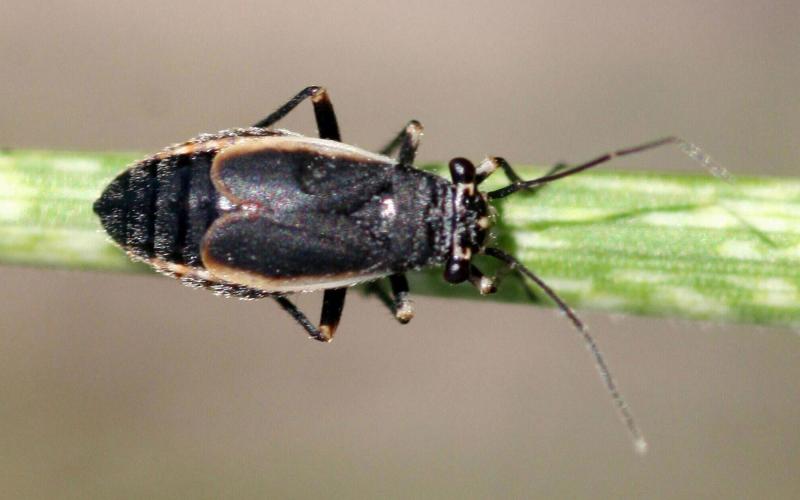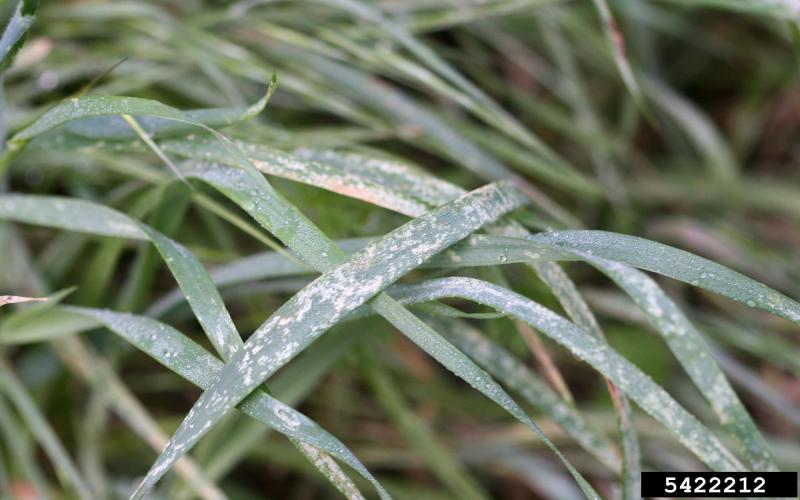Spring green-up is the time to be watching for black grass bug activity. Large populations of this early-season pest can cause severe damage to pasture (up to 90% forage reduction) and infest the edges of wheat fields. If left untreated, black grass bug populations tend to increase year after year. In 2018, we saw the largest impact in central and southwestern South Dakota. Most reports were either in pastures or road ditches adjacent to wheat fields. Populations were down in 2019, which was likely due to the extremely wet and cool conditions. With warmer and somewhat dryer weather this spring, black grass bug populations could potentially rebound. Although it may not be necessary to manage black grass bugs every year, it is important to monitor their activity to prevent outbreaks from occurring.
Profile

Black grass bugs are small bugs that are either uniformly black or black with a tan margin along the wings (Figure 1). They are approximately ¼ inch long and have large eyes that protrude from the sides of their head. Black grass bugs overwinter as eggs and hatch out as soon as the grass begins to green up in April and May. Upon hatching, nymphs immediately begin feeding on the tender new grass and mature over the next 4 to 5 weeks. As adults, they live for several more weeks to mate and lay eggs for the following year. Black grass bugs only have one generation per year.
Black grass bugs can reduce crop yields, forage quality, and may deter livestock grazing. Feeding injury appears as light-colored spots on the leaves, which is called stippling (Figure 2). Black grass bugs primarily feed on grasses but can eat broadleaf plants as well. They prefer wheatgrasses including crested and intermediate, making road ditches or pastures that are composed of wheatgrass monocultures the most susceptible to infestation. Severe infestations may lead to black grass bugs migrating into nearby wheat fields, although injury is usually limited to the field edges.
Scouting and Management

There are no established thresholds for managing black grass bugs. However, early detection is recommended as large populations can quickly cause widespread damage. Check pastures and wheat fields for areas of discoloration, and inspect plants for stippling damage (i.e., white spots on the leaves) or the presence of black grass bugs. A sweep net may be helpful when scouting, as the bugs usually drop to the ground when disturbed.
Black grass bugs can be managed effectively through proper grazing management, hay removal, burning, or foliar insecticides. For pasture and range situations, intensively grazing livestock in the spring can help reduce black grass bug feeding injury and the survival of egg-laying females. Furthermore, intensive grazing in the fall will remove stems containing eggs, which results in lower populations the following year. This type of seasonal management can also be achieved through mowing or burning practices. In areas that have been heavily impacted by black grass bugs during the previous year, applying an insecticide, such as Malathion, during spring emergence (April/May) can be very effective. As mentioned previously, it is not necessary to manage black grass bugs every year, as it takes several years for their populations to build up to significantly damaging levels.

